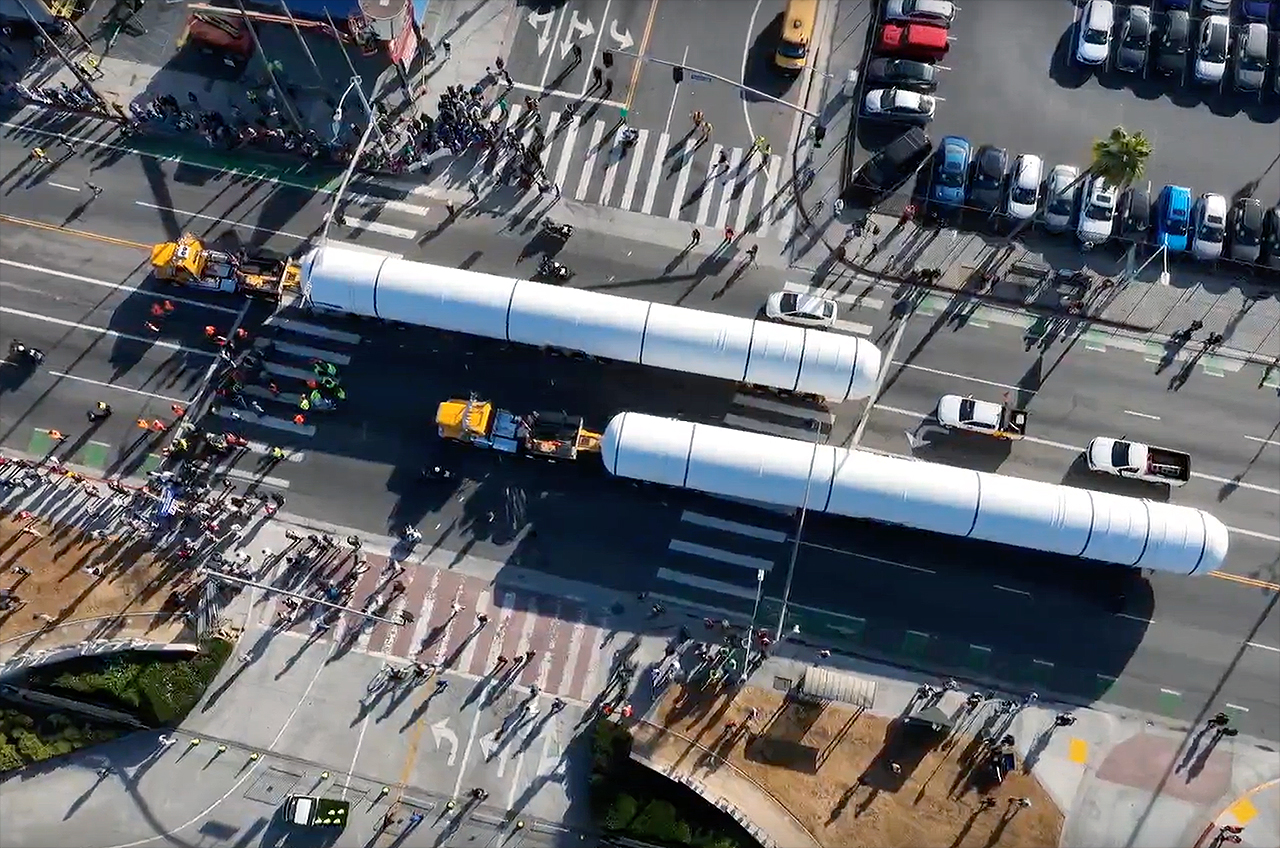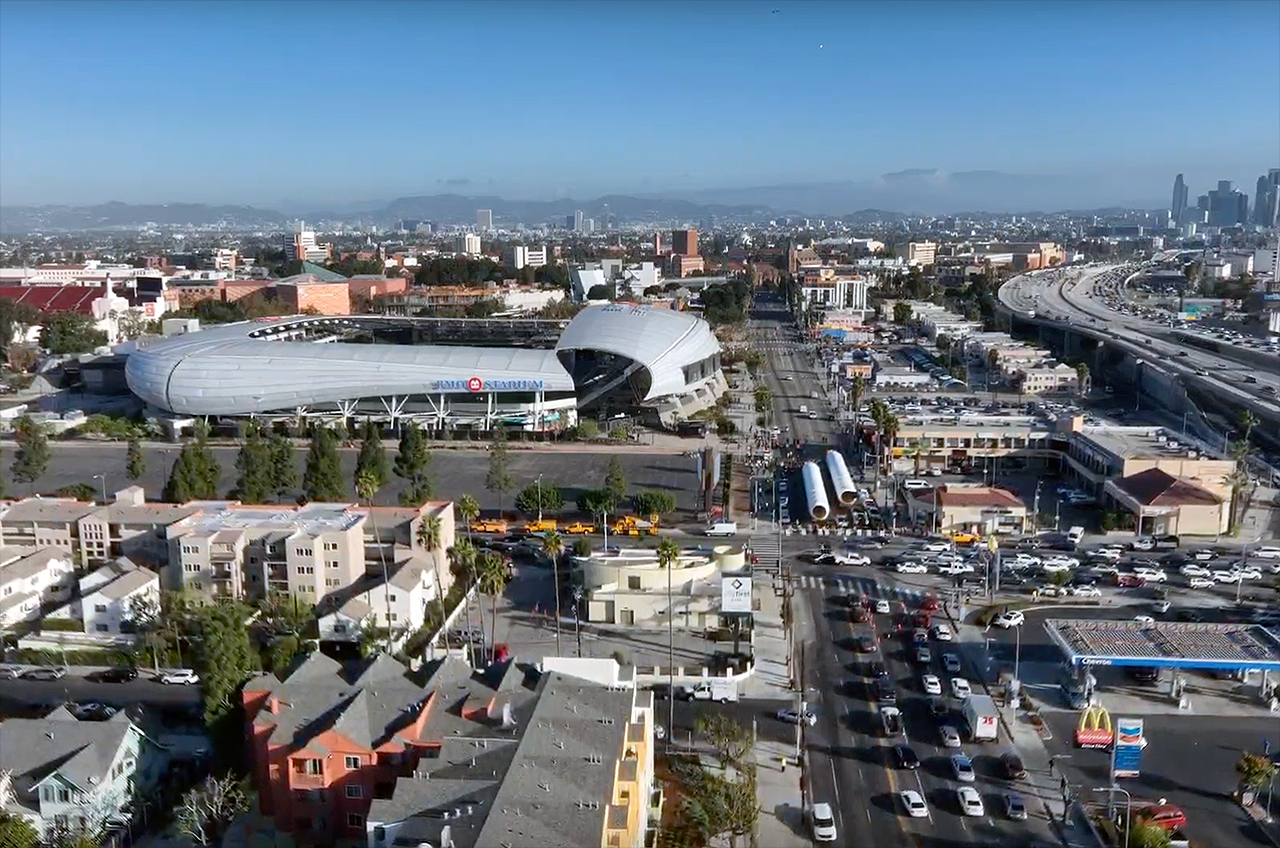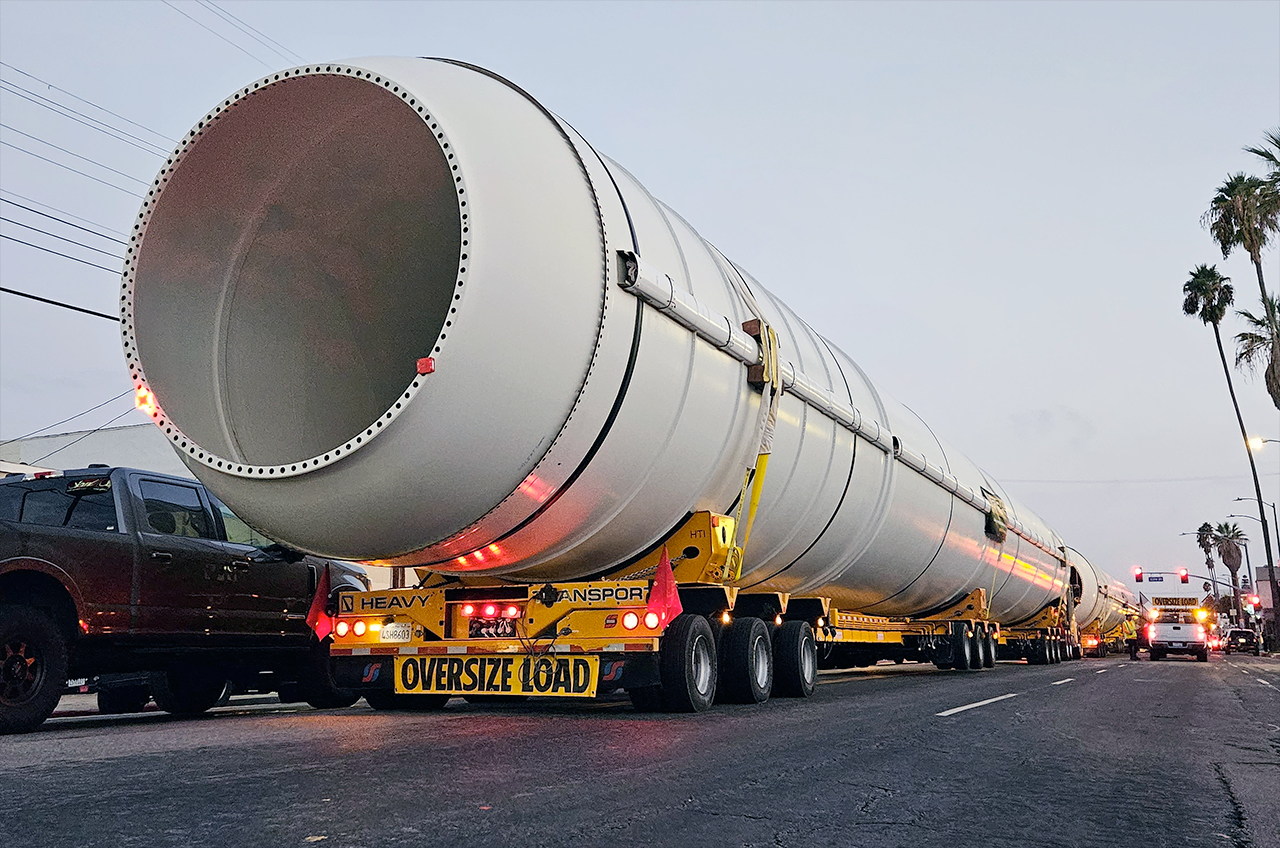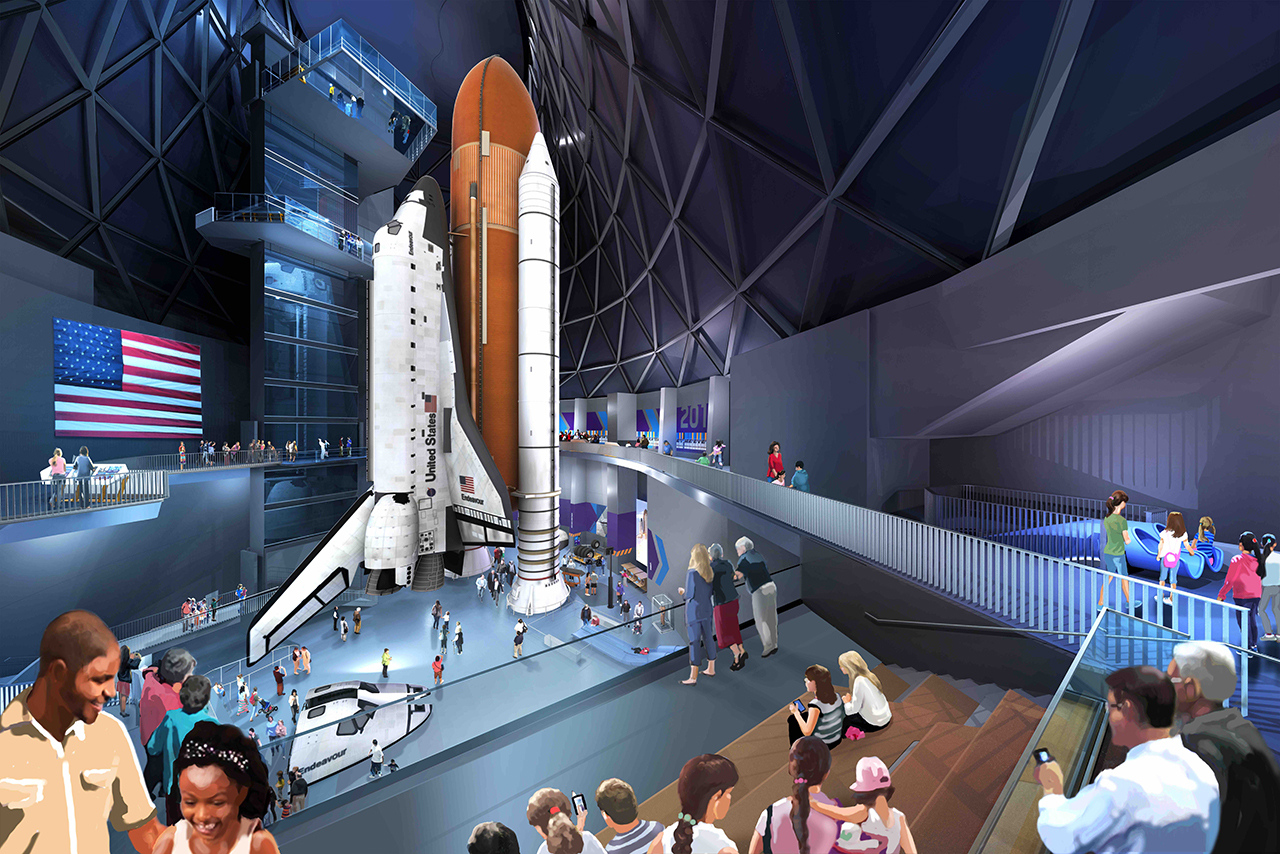Rocket booster parts arrive in LA to stand up space shuttle Endeavour exhibit
The two solid rocket motors are now in place to stand as part of the space shuttle Endeavour's vertical exhibit.
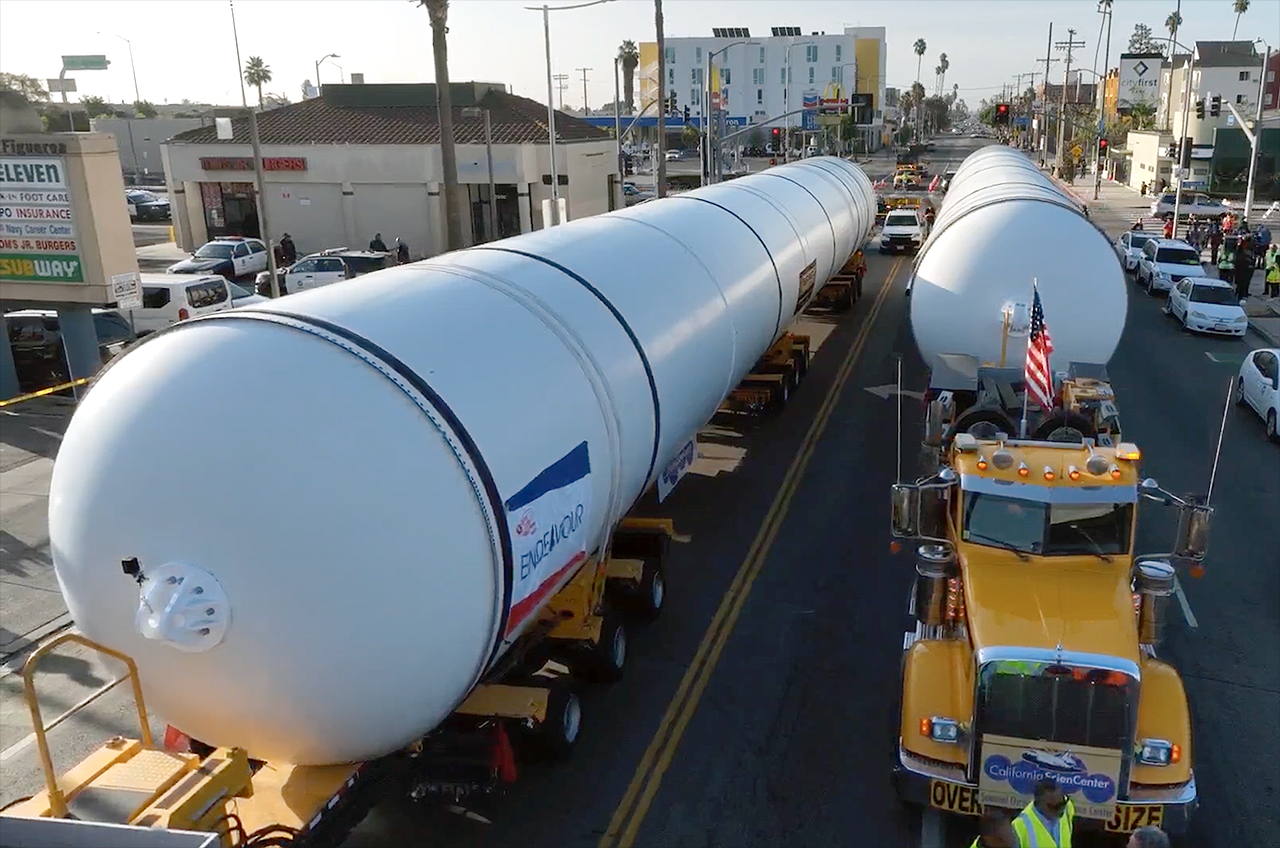
They may not be as iconic as Endeavour or as large as the orbiter's external tank, but the sight of twin rockets moving through the streets of Los Angeles was enough to once again draw a crowd to watch the space shuttle components being delivered to the site of their future display.
The last major parts needed to exhibit Endeavour in its vertical, ready-for-launch configuration, the two solid rocket motors (SRMs) completed a two-day, 100-mile (160 kilometers) trip from the Mojave Air and Space Port to the California Science Center on Wednesday (Oct. 11). The SRMs form the largest part of the solid rocket boosters (SRBs) that during the space shuttle program fired in tandem with the orbiter's three main engines to produce the majority of the thrust needed to lift the vehicle off the launch pad.
Now, they will be the first to stand up vertically in the science center's new Samuel Oschin Air and Space Center, serving as the pillars holding up the external tank and Endeavour when the stack debuts on public display in the coming few years.
Related: Where are NASA's space shuttles now?
"We did talk to the city of L.A. about making the last section of the move during the daylight hours so that people could come out and participate like they did when Endeavour came from LAX [Los Angeles International Airport] or ET-94 came from Marina del Rey. It's really the last big piece that the general public will be able to participate in, because the lifts that are coming up to stack the parts in the building will be on a construction site with very large cranes and limited space," Jeffrey Rudolph, president and CEO of the California Science Center, said in an interview with collectSPACE.com.
Flight proven and street legal
Motorists driving along CA-58, US-395, I-15 and I-605 got the first view of the two 116-foot-long (35 meters) solid rocket motors as they departed Mojave for L.A. on Tuesday morning (Oct. 10). Riding atop two 36-wheel transporters, each of them towed by a semi-trailer truck with a "Wide Load" sign and an American flag mounted to its roof, the SRM convoy, when parked bumper to fender, stretched about the same length as six yellow school busses.
The SRMs spent much of Tuesday afternoon and part of the night parked along the shoulder of I-605 southbound to set up their daytime arrival at the California Science Center.
Early Wednesday morning, beginning at 3 a.m. PDT (6 a.m. EDT or 1000 GMT), the SRMs got underway again, taking the 605 southbound to I-105 westbound and then merging onto I-110 northbound. At approximately 5 a.m. PDT, the convoy exited the freeway for surface streets, making their way to Figueroa, where the public had been directed to get their best view the SRMs driving along the route.
As spectators cheered and took photos, the trucks paused at Figueroa and Martin Luther King Jr. Blvd. until 8:45 am. PDT, when they proceeded past a ceremonial "finish line" to the California Science Center about 15 minutes later.
Former NASA astronaut Doug Hurley, who flew on Endeavour and is now a senior director at Northrop Grumman, joined the festivities at Martin Luther King Jr. Blvd., representing the company that originally built, serviced and ultimately donated the SRMs for flight and now their display.
Related: Facts about NASA's space shuttle, the 1st reusable spacecraft
"It's an honor just being able to contribute to this exhibit the great history that the shuttle program had, and obviously, the great history that Northrop Grumman and before that Orbital ATK had — it's just as long a 30-year history that we supported the shuttle," Hurley told collectSPACE. "It is a proud moment, and I'm glad that we could be a part of it."
Northrop Grumman originally delivered the two SRMs to the Mojave Air and Space Port in 2020, where they waited until they were needed for the science center's "Go for Stack" operation got underway. The two inert motors were assembled from hardware that was previously used in 32 static ground tests and 81 space shuttle missions, including 16 of Endeavour's 25 launches. One of the parts, which was used to connect the right-hand solid rocket booster to the external tank, last lifted off on STS-127, Hurley's first spaceflight.
Breaking space news, the latest updates on rocket launches, skywatching events and more!
Next stop: Up
"They pulled up just north of the science center and will be offloaded there for a few weeks of work that will done here on site. So they'll be sitting there outside for a little bit," said Rudolph of the newly delivered solid rocket motors.
When ready — the date has yet to be set — two large cranes will be used to lift the SRMs one at a time and mate them to their aft skirts, which were hoisted into place within the Samuel Oschin Air and Space Center construction site in July. Then the two forward assemblies will be mated to the top of the SRMs and, once stacked, they all complete the solid rocket boosters.
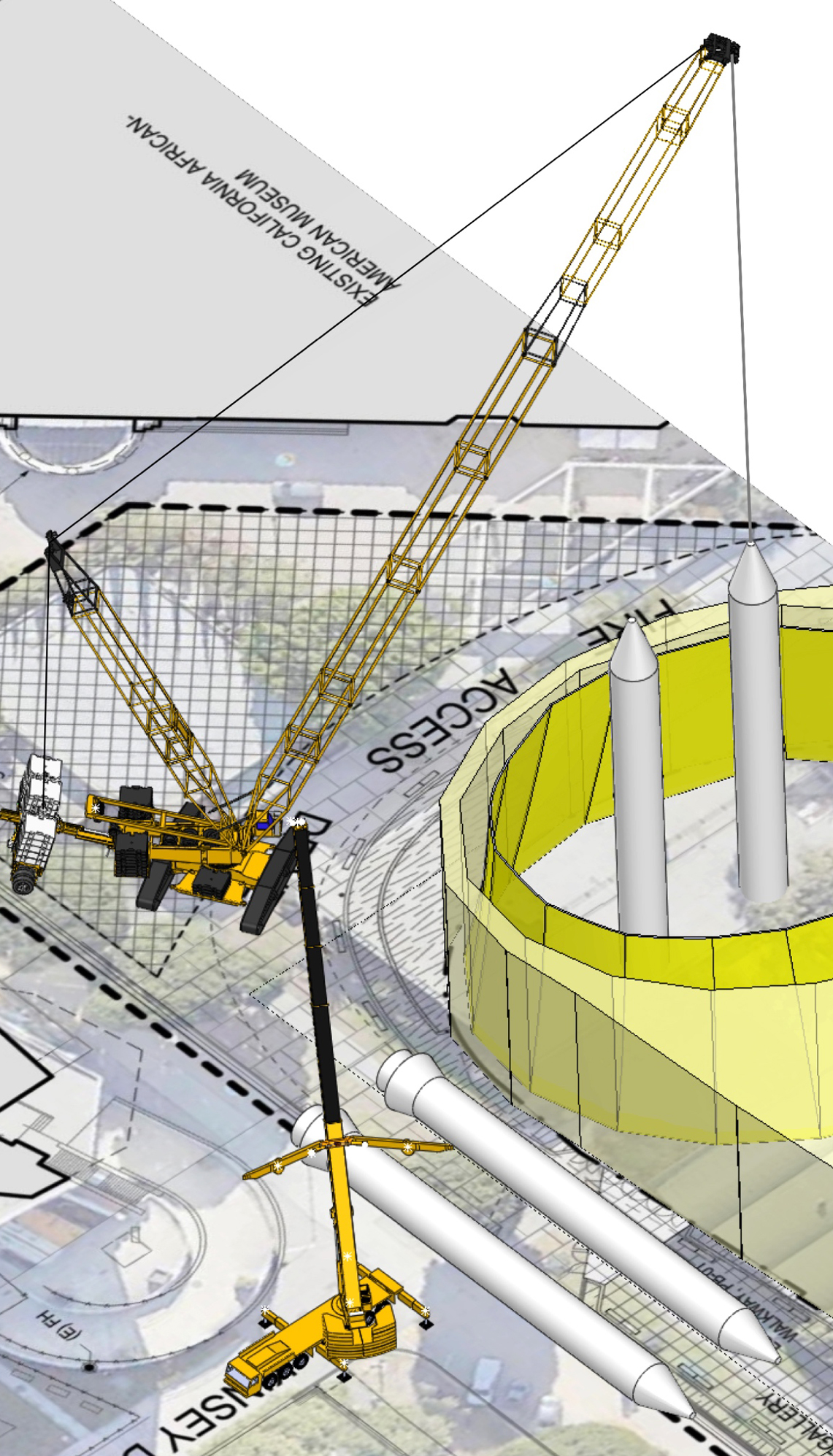
With the two solid rocket boosters standing in place, the external tank (ET-94) will be lifted and lowered between them and then Endeavour will make its final move across Exposition Park to be hoisted by cranes and mated, completing the stack. The entire process is expected to take about six months to complete, including the erection of scaffolding around the vehicle to ease in its assembly and to protect it while the Samuel Oschin Air and Space Center building is next finished above and around it.
(The public has until the end of the year, Dec. 31, to see Endeavour where it has been exhibited for the past 11 years, the Samuel Oschin Display Pavillion.)
Once the new center opens, Endeavour's vertical exhibit will offer the public an unprecedented experience, one that previously was primarily only available to technicians, engineers and astronauts — standing at the base and then rising on an elevator alongside the 200-foot-tall (60 m) space transportation system.
"For me, that was one of the most special moments," said Hurley. "Obviously, they can't replicate the fueling part of it, the steaming and heaving part of it, like I witnessed, but it'll be close just to get the scale of walking up to a vehicle on the pad and how big shuttle was."
"It's hopefully going to be something that excites people, motivates people, gets people into those STEM [science, technology, engineering and mathematics] careers and gets our next generation excited about space travel and exploration," he said.
Click through to collectSPACE to see more photos and video from the rocket motors' road trip to the California Science Center.
Follow collectSPACE.com on Facebook and on Twitter at @collectSPACE. Copyright 2023 collectSPACE.com. All rights reserved.

Robert Pearlman is a space historian, journalist and the founder and editor of collectSPACE.com, a daily news publication and community devoted to space history with a particular focus on how and where space exploration intersects with pop culture. Pearlman is also a contributing writer for Space.com and co-author of "Space Stations: The Art, Science, and Reality of Working in Space” published by Smithsonian Books in 2018.
In 2009, he was inducted into the U.S. Space Camp Hall of Fame in Huntsville, Alabama. In 2021, he was honored by the American Astronautical Society with the Ordway Award for Sustained Excellence in Spaceflight History. In 2023, the National Space Club Florida Committee recognized Pearlman with the Kolcum News and Communications Award for excellence in telling the space story along the Space Coast and throughout the world.

